
Ovarian cancer is also called the silent killer and it affects women of all ages. It is one of the most lethal female cancers. Majority of women are diagnosed with ovarian cancer when the cancer has already spread, which is the advanced stage and it is more difficult to treat. There is no early detection test for ovarian cancer. Most of the time, patients do not experience any symptoms or the symptoms could be often confused with other illnesses.1

Staging is a process which describes how much cancer is in the body and how far the cancer has spread. Doctors can get information on how serious the cancer is and what best treatment he should consider to treat it. There are a total of 4 stages of ovarian cancer.3,4
Cancer is confined to one or both ovaries.
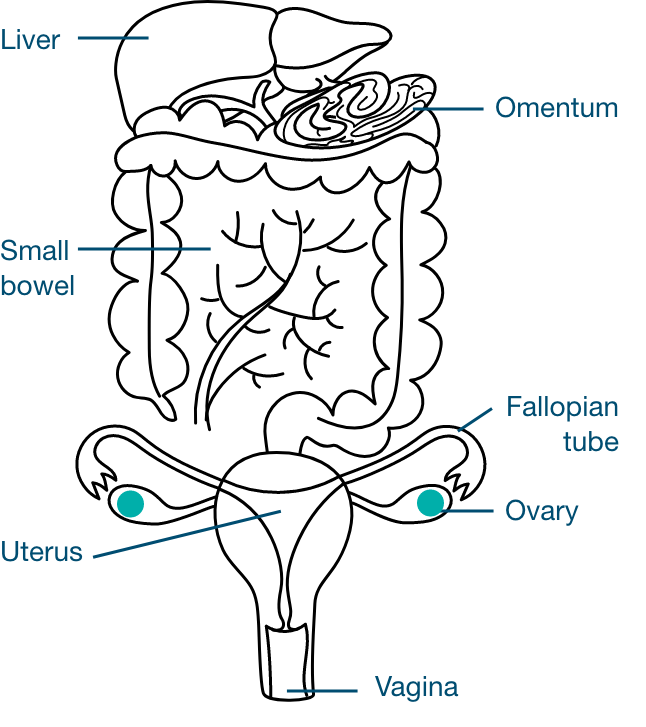
Cancer has spread within the pelvic region.
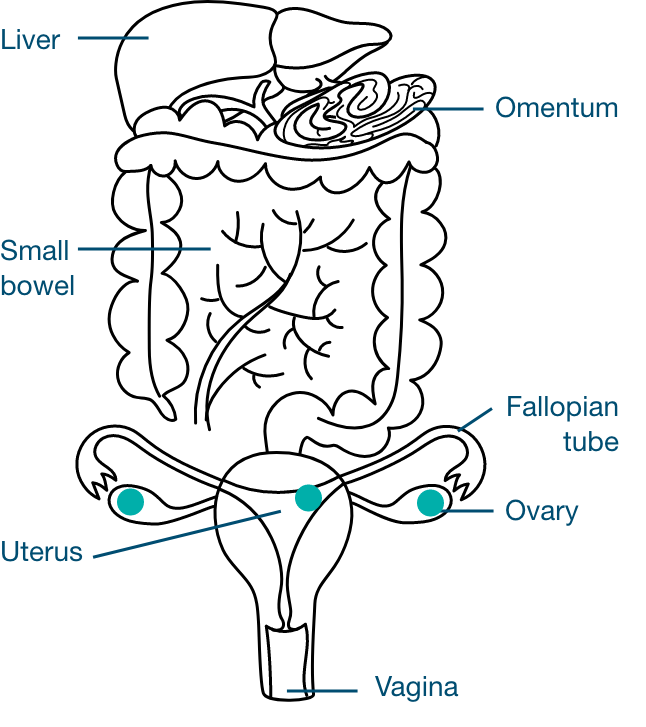
Cancer has spread to other organs in the abdomen.
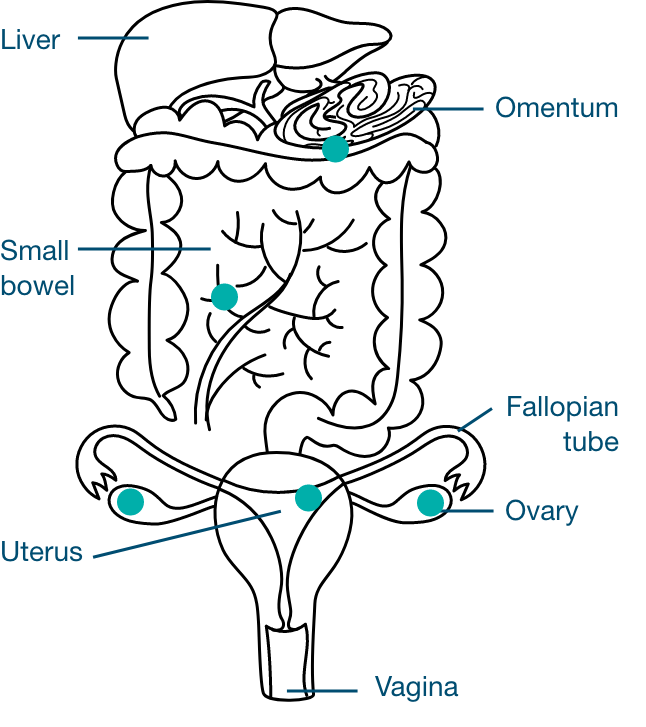
Cancer has spread beyond the abdomen to other parts of the body.
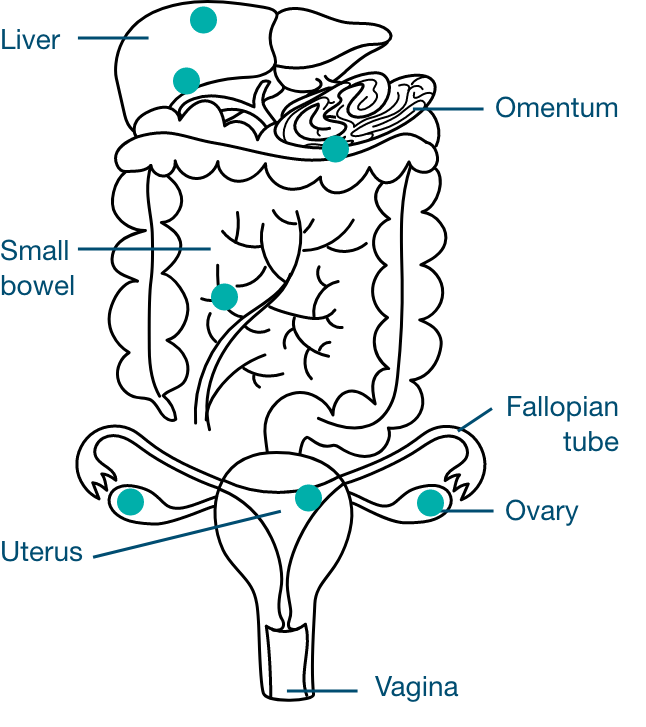

Ovarian cancer is easier to treat if it is detected early. There are some symptoms which are commonly associated with ovarian cancer.5,6
The common symptoms are:

Increased abdominal size / bloating

Difficulty eating / feeling full easily5

Pelvic / abdominal pain

Urinary urgency / frequency (always feel like going to the toilet)
Others symptoms of ovarian cancer can include:
These symptoms are often confused with symptoms of other illnesses. If they are caused by ovarian cancer, they tend to stay for a long time and are more severe. If you have experienced these symptoms more than 12 times a month, please consult your doctor so cause can be found and treated if necessary.6

Risk factors are anything that can increase your chances of getting certain diseases like cancer. But it does not mean that if you have a risk factor, you will definitely get the disease.
Researchers have found several risk factors that increases the chance of a woman developing ovarian cancer.7
The risk of getting ovarian cancer increases with age. Most ovarian cancers develop after menopause.
Obese women (body mass index [BMI] of at least 30) might have a higher risk of developing ovarian cancer. It is also associated with poorer ovarian cancer survival rate.
The risk of developing ovarian cancer is high if your first degree relatives (mother, sister or daughter) have ovarian cancer. The risk will also increase if there are more relatives in your family who have other cancers such as breast, prostate, colorectal or uterine cancers.
Women with germline mutations in BRCA1 have a 25 – 50% chance of developing ovarian cancer. A mutation in the BRCA2 gene can also increase the chance of getting ovarian cancer of up to 20%.6
There are also a couple of factors that can lower the risk of developing ovarian cancer.


The BRCA gene is an important gene that helps to control cell growth in our body. When a mutation happens in this gene, it will lead to an increased risk of cancer. The two most common cancers in women that are due to BRCA mutations are breast and ovarian cancers.
Learn more about Hereditary Breast, Ovarian, Pancreatic and Prostate Cancer
In all women with ovarian cancer, up to 15% of the patients will have a germline BRCA1/2 mutation9 and up to 7% of the patients will have a somatic BRCA1/2 mutation.10

Surgery is the main treatment option for most ovarian cancer cases. Operations will be carried out by specialists called gynaecologic oncologists.
Debulking surgery is the procedure to remove as much tumour as possible from the body. The more thorough the surgery is, the higher chance the patient will be able to do well.8,9
If your cancer is in the advanced stage, your doctor may recommend chemotherapy followed by surgery to remove as much of the cancer as possible. This procedure is called interval debulking.11

Chemotherapy is a drug treatment that uses chemicals to kill fast-growing cells in the body, including the small portion of remaining cancer cells from the surgery, or those cancer cells that have spread to other parts of the body. Chemotherapy drugs can be injected into a blood vein or taken by mouth. It will enter the bloodstream and reach almost all parts of the body.12,13

Targeted therapy uses medications that specifically target the certain defects or mutations which are present in the cancer cells. Your doctor may test your cancer cells (for instance: BRCA test — read more from Testing for BRCA) to determine which targeted therapy is most likely to have an effect on your cancer. Targeted therapies are often designed as a maintenance treatment after the completion of chemotherapy. Due to its ability to selectively kill cancer cells, it usually has less side effects compared to chemotherapy.12
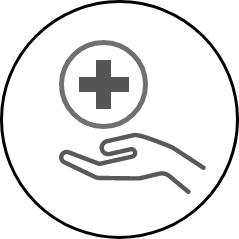
Palliative care is specialized medical care that supports and complements the cancer treatment like the relief from pain and other symptoms of a serious illness. It helps people with cancer feel better and live longer.12